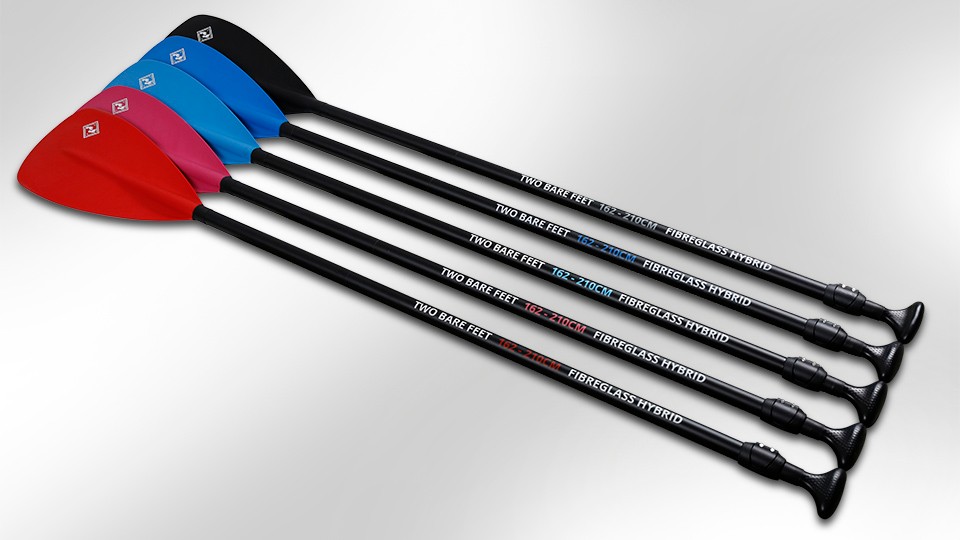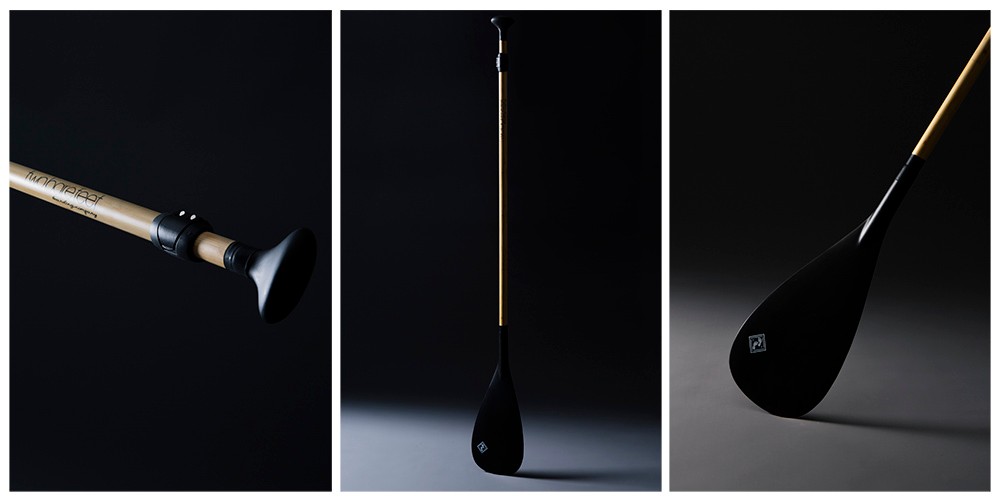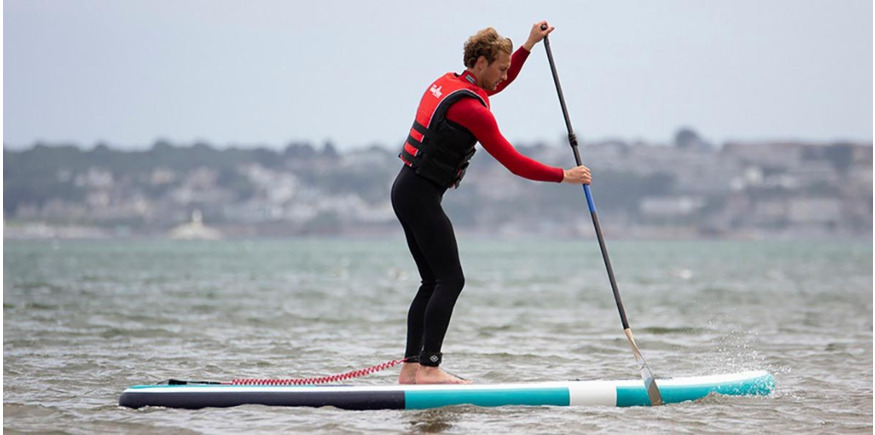After hours of research into which paddleboard is right for you, you’ve made your mind up on the ideal craft but then immediately been faced with another decision: which SUP paddle do I buy? With all the different options available, things may seem almost as complex as buying a board, however, we’re here to make it much easier.
To help you decide, you should first consider how durable you want your paddle to be, how much you care about performance (which will depend on what exactly you are using your board for), and finally, your budget. Each of these factors will be directly related to the materials used to construct the paddle, so that’s where we’ll start.
Paddleboard Paddle Material/Construction
Aluminium SUP Paddles
By far the most economical choice when it comes to paddleboard paddles are those made with aluminium shafts and plastic blades. They’re a good choice for beginner paddlers thanks to their tough build. Drop it on the ground or knock it against a rock in the water and they’ll stand up to the punishment, as well as being ideal if you plan on loaning your board out to friends at the beach or letting the kids have a go.
The downsides are that the aluminium is much heavier than alternative materials which means you’ll tire faster on a long paddle, and the flexible blade is less effective at propelling you forward.
Fibreglass SUP Paddles
Fibreglass construction is the next step up from aluminium and offers probably the best compromise between price, performance and durability. This is because the fibreglass is much lighter than aluminium but is only used for the shaft while the blade is still made from PP (plastic). That means the blade is still very durable while the shaft is lighter and stiffer without a huge increase in price. Check out our fibreglass hybrid paddles in three piece and two piece options.

Carbon Hybrid SUP Paddles
This is where we really step into high performance SUP paddle territory. Carbon fibre is a material with superior strength and is significantly lighter than any of the other available options. To create a high performing paddle that is still slightly forgiving, we have combined a carbon fibre shaft with a PP (plastic) blade.
This combination significantly reduces weight as most is usually held in the shaft. It also makes your paddle much stiffer, meaning your strokes are better translated into force through the water to propel you. Combining this with a PP blade means your paddle still maintains durability. This can be comforting when dipping your paddle in shallower waters as any contact with rocks will not spell disaster.
Full Carbon Fibre SUP Paddles
As good as SUP paddles get, these are made from carbon fibre all the way from the handle to the tip of the blade. This Of course makes them the most lightweight paddles around but also the highest performing thanks to the stiffness of the material. Stiffness equals efficiency when paddling as no energy is lost through the flex of the paddle.
To further the performance specs, our full carbon paddles have a blade that has been designed to minimise drag on the recovery stroke thanks to a trim outline and flat profile. The only downside of these paddles is that they don’t possess the durability of the previous models so need to be handled carefully by confident paddlers.

Bamboo laminate full carbon fibre paddle
Fixed SUP Paddle vs Adjustable SUP Paddle
Adjustable SUP paddles are the most popular here because of their versatility and are undoubtedly the best option to go for if you are just starting out. They allow you to easily experiment with different heights so you can fine tune the length to suit you and whichever discipline you’re undertaking (the correct height for your paddle is very important and something we’ll get to shortly). An adjustable SUP paddle also allows you to share your paddle with friends as family as they can adjust the paddle to their own correct height.
Fixed-length SUP Paddles are preferred by some paddlers because they are lighter and stiffer due to the lack of moving parts. We’d recommend only going this way though if you are absolutely sure on your perfect paddle height—they are really just a step up for very experienced paddlers.
Three-piece SUP Paddle vs Two-Piece SUP Paddle
If you do decide to go down the adjustable SUP paddle route, you’ve still got another decision to make: three-piece or two-piece paddle?
A three-piece paddle is perhaps the most practical option in terms of portability and storage. These typically consist of the adjustable handle, the mid-section and the blade-section. They can be disconnected half way up the shaft so you are left with two halves which fit neatly into our drybag rucksacks.
Two-piece paddles, on the other hand, have the advantage of being slightly stiffer and more durable thanks to the fixed shaft, with the only other piece being the adjustable handle. This means they are around 160cm in length making them less practical out of the water but more practical in the water.

SUP Paddle Length
As we mentioned above, your paddle height is very important. Whether too short or too tall, it can greatly impact the efficiency of your strokes, making you work harder than you need to, as well as making the experience uncomfortable.
To determine how tall your paddle needs to be, compare it to your own height, as the paddle always needs to be taller than you when setting it up on land. You also need to think about the type of paddling you are doing.
SUP Flat Water Cruising
If you’re just beginning to get to grips with stand up paddleboarding, then you’ll likely just be cruising on flat water. For this, we recommend having a paddle height that’s approximately 6-8 inches above your head. Then if you have an adjustable paddle, you can tweak the height depending on how it feels.
SUP Surfing
Generally, if you’re setting up a paddle for surfing then it will be shorter than for general paddling. We’d recommend somewhere between 2-4 inches above your head. This is because surfing on your paddleboard will require a more compact surf stance—you’ll be bending your knees more to help with stability when performing power strokes to catch a wave and whilst you’re riding a wave. A shorter paddle also allows for tighter turns so you can be more responsive and agile when reading the line-up and positioning for a wave.
SUP Racing
For the paddleboard racers out there, you can afford to go taller. Anywhere from 6-10 inches over your head, depending on your board and where feels comfortable. The reason for this being that you gain paddle reach and leverage meaning you can get more power from a single stroke.
That should cover all you need to know to buy your first SUP package or upgrade to a new and improved paddle but if you still have any questions, please contact us and one of our experts will be more than happy to help.




